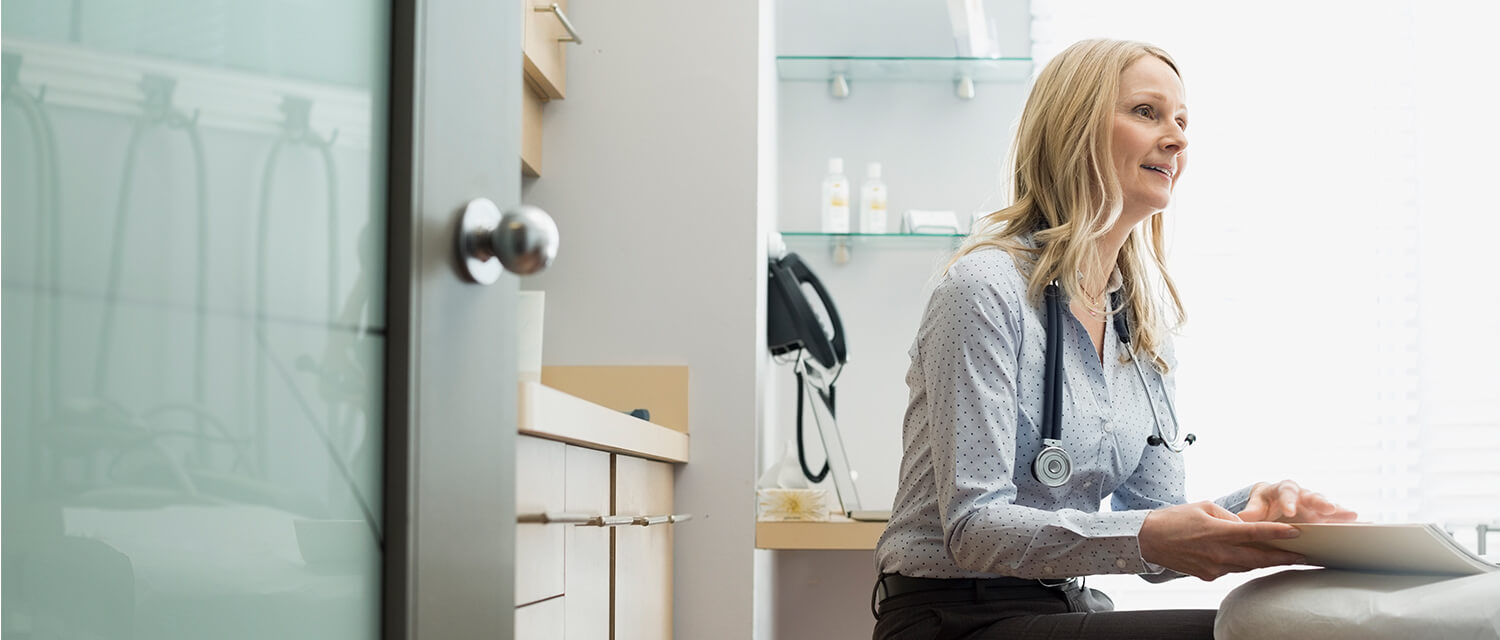Incontinence Treatments

Leaks Can Be Managed
Bladder leaks won't get better on their own. The good news is there are a number of relatively easy things you can do to treat or manage your leakage.
Where Do I Start?
The first step is to visit your healthcare provider to evaluate your needs and determine a plan of action. Nervous about opening up to your doctor? It might help to know that 25 million people experience leakage every year, so you're not alone. And don't worry–your healthcare provider has heard it all before. He or she will be a trustworthy and supportive partner in your quest for the right treatment. They're there to help.
Managing Your Incontinence
Here's a breakdown of some simple options. You can discuss these further with your healthcare provider to decide which feels right to start:
- Behavioral Changes
- Pelvic Exercises
- Changes in Your Diet
- Medication
- Surgery
- Protective Hygiene
Behavioral Changes
Visit the Bathroom Even When You Don't "Have" to Go
You'll likely experience fewer leaks and sudden urges throughout the day if you visit the bathroom regularly to empty your bladder, even when you don't "have" to go. However, it's important to note that if you go too often this can result in the shrinking of the bladder, limiting its ability to hold enough urine. Better to get on a schedule that helps you keep regular track of your urges and amount of urine – this will also make any changes more obvious.
Keep a Bathroom Diary
Try keeping a Bladder Diary to track your bathroom habits and leakage episodes. This diary can help your doctor assess your symptoms. Learn more about how to keep track of your leakage with a bathroom diary.
Pelvic Floor Exercises for Women and Men
Tackle Bladder Leaks Outside of the Bathroom
You can do special exercises, known as Kegels, to help strengthen the pelvic floor muscles that support the bladder. And yes, men can and should practice Kegels, too. Both men and women need strong pelvic floor muscles to help control the bladder and close the urethra. The best part? You can practice these preventative bladder leakage exercises anytime, anywhere and no one will be the wiser. Here's a handy guide on how to target those pelvic muscles.
Changes in Diet
Foods to Avoid
Foods that are diuretics, like your morning coffee or afternoon soda, could be placing a lot of unnecessary stress on your bladder, leading to more frequent leaks. Try reducing or eliminating the following foods from your diet to improve bladder control:
- Alcoholic and carbonated beverages
- Caffeinated coffee and tea
- Tomatoes
- Citrus fruits and juices
- Sugar, honey, and artificial sweeteners
- Chocolate
- Spicy food
All the good stuff, right? Cutting these foods out of your diet can be tough, but if it helps control bladder leaks, it's worth it.
Hydration is Key
We get it, water isn't exactly a replacement for wine or coffee but it's the ideal beverage choice for dietary and bladder health. Want to know more? Visit our Diet and Incontinence guide to learn about dietary health in bladder control.
Medication for Bladder Leakage
Which Ones Work for You?
Medications can be tricky. When it comes to incontinence, some medications improve symptoms while others just make them worse. Sometimes, the same medications can induce or reduce leaks – depending on the circumstances. Certain types of medications are bladder irritants that can trigger incontinence, including some sedatives, diuretics, and narcotics, while other types affect the performance of the bladder muscle and the bladder outlet muscle.
Doctor Knows Best
Best to ask your healthcare provider whether your current medications impact bladder control, and be sure to discuss how changing your medications could affect your bladder leaks. In the meantime, you can learn more about specific medications and their effects on bladder control with our medical guide to bladder leaks.
Surgery
An Option to Discuss
Surgery is by no means necessary to experience improved bladder control. If you'd like to pursue it as an option, be sure to carefully consider the benefits and risks with your healthcare provider, as it is an aggressive option that can lead to unwanted side effects.
Upgrade to Protective Hygiene
The Best Way to Manage Leaks
As you work to improve your bladder control, protective hygiene can help you manage related wetness or odor, and promote a fresh, natural feeling whenever leaks happen. Just like deodorant or toothpaste, protective hygiene can be used on a daily basis to keep you feeling fresh, clean, and comfortable around the clock. You can use it alone or as one part of your incontinence management plan. Need help finding the right product? Check out our Protective Hygiene Product Finder tool to choose the solution that fits you best.

Try Prevail Free
Get a free sample of our protective hygiene products.





